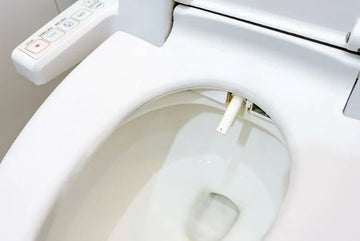In recent years, bidets have gained significant popularity as an eco-friendly and hygienic alternative to traditional toilet paper. But how do these intriguing bathroom fixtures actually work? In this article, we will delve into the mechanics of bidets, explore their various types, and discuss their numerous benefits.
At the heart of a bidet's function is its ability to provide a stream of water for cleansing purposes. This fundamental feature is what sets bidets apart from conventional toilets. Unlike toilet paper, which merely wipes away waste, bidets utilize water to thoroughly clean the affected area, providing a refreshing and more effective way to maintain personal hygiene.

The Basics of Bidet Functionality
Bidets operate by using a stream of water to cleanse the body's nether regions. This water stream is typically adjustable in terms of pressure and temperature, allowing users to customize their experience for optimal comfort. The mechanism of a bidet is relatively straightforward, relying on a combination of plumbing and user controls to deliver water to the desired area.
Most bidets are equipped with a nozzle or sprayer that directs the water where it's needed. Some models have a fixed nozzle, while others feature a retractable one for added convenience. In either case, the water flow is controlled by turning a dial or pressing a button, allowing users to easily activate the cleaning process.
Types of Bidets
There are several different types of bidets available on the market, each with its own unique features and benefits. The most common types include standalone bidets, bidet toilet seats, and handheld bidet sprayers.
Standalone Bidets
Standalone bidets are separate fixtures that are typically installed next to the toilet. They resemble a small sink and offer a dedicated space for personal cleansing. Users simply sit on the bidet and adjust the water flow as needed. Standalone bidets are popular in many European countries and are known for their thorough cleaning capabilities.
Bidet Toilet Seats
Bidet toilet seats are an increasingly popular option for those looking to add bidet functionality to their existing toilets. These seats replace the standard toilet seat and come equipped with built-in bidet features. They often include adjustable water pressure, temperature settings, and even air drying capabilities for a complete and convenient cleaning experience.
For more detailed information on how bidet water pressure plays a crucial role in cleaning efficiency, you can visit DripX's insights on bidet water pressure.
Handheld Bidet Sprayers
Handheld bidet sprayers, also known as shattafs, are a more versatile option that can be easily installed next to any toilet. These sprayers are similar to handheld showerheads and allow users to manually control the direction and intensity of the water flow. Handheld bidet sprayers are a budget-friendly choice that offers flexibility and convenience.
Benefits of Using a Bidet
Bidets offer a range of benefits that make them an attractive addition to any bathroom. One of the most significant advantages is their ability to provide superior cleanliness compared to toilet paper alone. The use of water ensures a more thorough cleaning, reducing the risk of irritation and infection.
In addition to improved hygiene, bidets are also more environmentally friendly. By reducing the reliance on toilet paper, bidets help to conserve water and reduce waste. This makes them a sustainable choice for those looking to minimize their environmental impact.
For those interested in learning how to properly use a bidet, check out this helpful guide on how to use a bidet.

FAQs About Bidets
What is the primary function of a bidet?
The primary function of a bidet is to provide a stream of water for cleansing the genital and anal areas after using the toilet. This ensures a more thorough cleaning compared to traditional toilet paper.
Are bidets sanitary?
Yes, bidets are considered to be highly sanitary. The use of water for cleansing reduces the risk of skin irritation and infection, promoting better hygiene overall.
Can bidets be installed in any bathroom?
Most bathrooms can accommodate a bidet, especially if you opt for a bidet toilet seat or handheld bidet sprayer. However, standalone bidets may require more space and plumbing adjustments.
In conclusion, understanding how do bidets work opens up a world of benefits and improvements in personal hygiene. Whether you choose a standalone bidet, a bidet toilet seat, or a handheld sprayer, incorporating this fixture into your bathroom routine can lead to a cleaner, more comfortable, and environmentally conscious lifestyle. For further exploration, you can check out DripX's blog for more insights on bidet technology and its advantages.
This article contains affiliate links. We may earn a commission at no extra cost to you.






